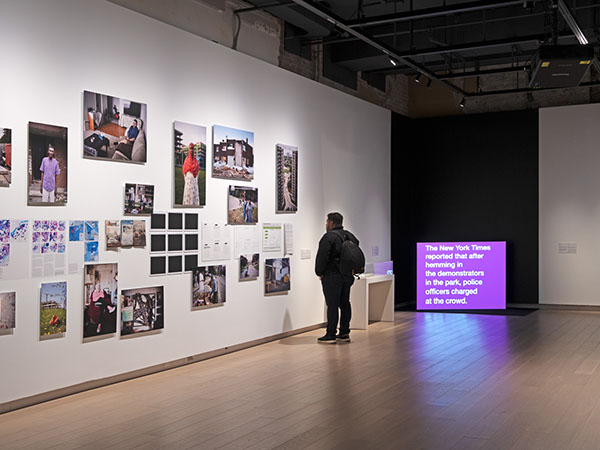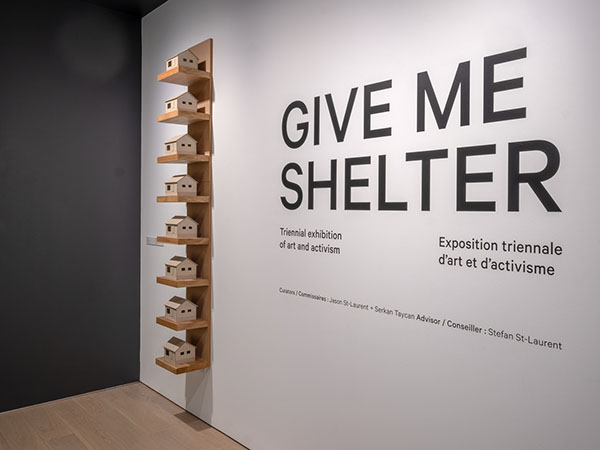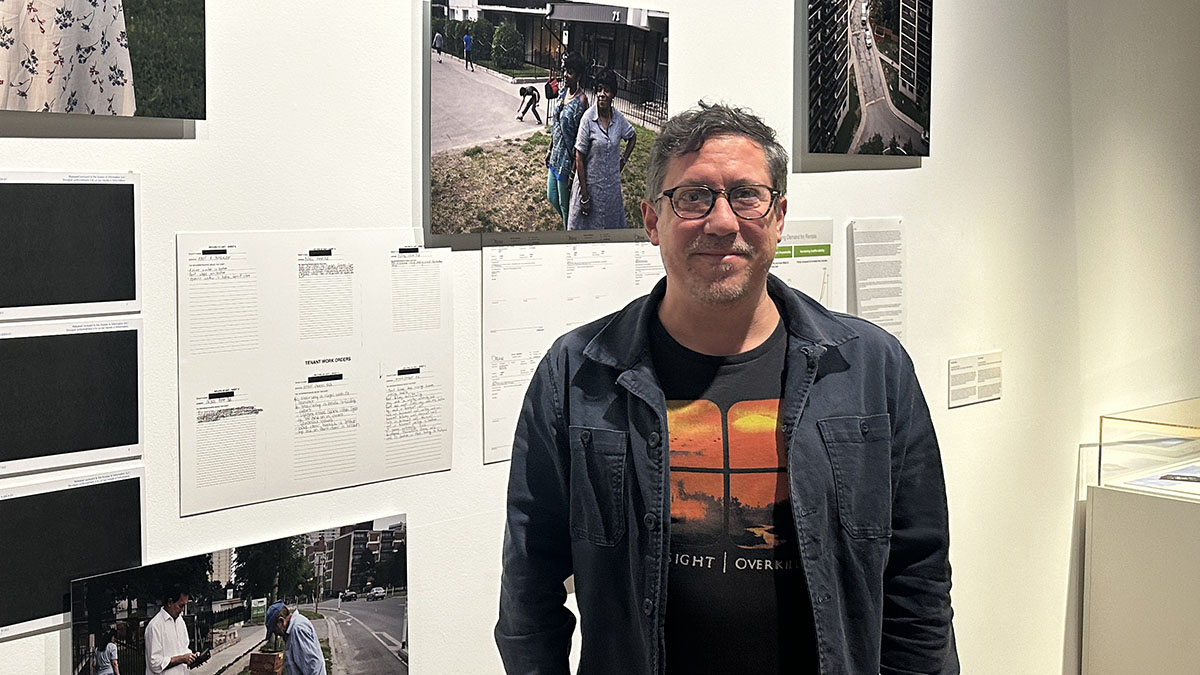A downtown Ottawa art gallery’s three-month-long exhibition on homelessness and housing insecurity has come to an end, but those involved say the show helped build momentum for social change.
Give Me Shelter brought together 12 artists from Canada and beyond to showcase work exploring the housing and homelessness crisis.
Hosted by the SAW gallery on Nicholas Street near the Rideau Centre, the exhibit ran from Oct. 11 to Jan. 25. The artists, curators and community representatives say the show’s activist message is needed to push Canada and other countries to alleviate the crisis.
The exhibit was the first phase of what is intended to be a triannual blending of art and activism that goes along with the gallery’s mandate to support socially and politically engaged art practices, says SAW curator Jason St-Laurent.
St-Laurent said the exhibit was a great success with lots of interest from Ontario and Quebec school groups. He added that this “shows us that this exhibition is creating a dialogue in the community that’s interesting.”
Neal Rockwell, a journalist, artist and documentary researcher based in Montreal, approached the gallery about showcasing his 2018-2024 piece title Financialized. The artwork examines the impact of well-heeled landlords on a few Toronto communities as well as Herongate in Ottawa.

Herongate was a planned redevelopment of a low-income community that threatened hundreds of residents with the loss of their rental homes and sparked a high-profile renoviction controversy in Ottawa a few years ago.
The combination of digital prints, paper and vinyl include photographs and archival materials like freedom of information requests or City of Ottawa notices and other elements that put the viewer in this moment.
“I think that an installation communicates differently than a newspaper,” said Rockwell, highlighting the mix of elements as a good way to convey the importance of stories of struggle. He said this form of informing the public reaches a different audience than traditional media.
The exhibition at SAW, which is part of the Arts Court cultural hub next to the Ottawa Art Gallery, echoes the calls for change from housing and homelessness activists.
Somerset Coun. Ariel Troster, whose downtown ward has a high rate of housing insecurity and homelessness, said “it feels very often that we are putting a bandaid on a giant problem and that we are years too late to address this crisis.”
Troster said things like the SAW exhibit are important for spreading the message that people experiencing homelessness are human beings who need resources.
The latest count in 2024 showed that nearly 3,000 people in the city were living in shelters or sleeping rough.
“The cost of living is exceptionally high right now and we have a very low vacancy rate and very, very high rents in the city and a lot of people are having trouble getting by,” said Troster. According to Zumper’s Rental Market Trends, the average rent for a one-bedroom apartment in Ottawa is $2,000.
Miles Krauter, assistant to Capital Coun. Shawn Menard, said homelessness part of a continuum of struggles people have with obtaining sustainable shelter. “We see people on the street in our ward, too. That’s another real, visible sign of housing insecurity,” said Krauter.

Krauter said the loss of rent control in 2018 is a major reason for housing insecurity in the city. Rent control rules in Ontario set out that any building built before Nov. 15, 2018 can only increase 2.5 per cent of a monthly total.
However, there are ways around the limits including “renovictions,” which have been known to allow landlords to evict tenants for property improvements. This process allows landlords to substantially raise rents in their buildings.
“We need to have rent control that’s not riddled with loopholes,” Miles Krauter says.
St-Laurent said he believes governments need to do more. “We can only do so much as a small organization.”
There has been some action recently.
The federal government announced on Jan. 22 that $10.5 million will be given to the City of Ottawa in the 2024-25 and 2025-26 fiscal years to help alleviate homelessness. The fund is financed through the federal Unsheltered Homelessness and Encampments Initiative.




